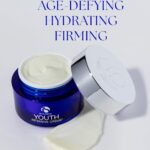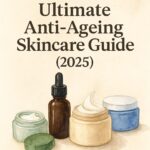
What really helps, what barely moves the needle, and how long it takes.
Stretch marks are normal. They show up during growth spurts, pregnancy, weight changes, bulking cycles, or quick body recomposition. They start out red or purple when the skin is newly stretched, then fade to pale or silvery lines over time. You will see a lot of claims about “erasing” them. The truth is more grounded. You cannot fully remove stretch marks at home, but you can help them look softer, flatter, and less obvious, especially if you start while they are still new. This guide sets expectations, ranks what actually helps, gives a practical routine, and covers in-clinic options if you want a faster push.
What stretch marks are and why timing matters
Stretch marks, or striae, form when skin is pulled faster than its support network can remodel. Collagen and elastin fibers thin and rearrange, which shows as long, narrow streaks. You will hear two phases:
- Striae rubrae are new. They look pink, red, or purple and may itch. Blood flow is higher, so this phase responds best to treatment.
- Striae albae are older. They look pale, silvery, or slightly depressed. Blood flow is lower and fibers are more set, so change is slower.
Your plan depends on the phase. Early care focuses on calming color, supporting collagen, and keeping the area flexible. Later care focuses on texture and blending tone with the surrounding skin.
What actually helps at home (ranked by evidence and impact)
Retinoids (not during pregnancy or nursing).
Retinoids support collagen remodeling and can make newer marks shallower and finer over months. They work best in the rubrae phase. Start low, go slow, and moisturize. Skip entirely if you are pregnant or breastfeeding.
Hyaluronic acid and glycerin hydrators.
Hydration plumps the top layer so edges look smoother and the skin flexes better. These do not rebuild fibers, but they improve look and comfort and support other steps.
Centella asiatica and peptides.
Some formulas with centella, madecassoside, or signaling peptides can nudge repair. Effects are modest. Use them as a supportive layer, not a standalone fix.
Silicone gels or sheets.
Well known for raised surgical scars, silicone can help flatten and soften the feel of stretch marks for some users, especially when marks are slightly raised. Expect subtle changes and be consistent.
Oils and butters.
They reduce itch and improve flexibility, which can cut down on micro-tears during growth. They do not erase marks. If you enjoy them, use them as the final seal over active steps.
Exfoliation.
Gentle lactic acid or urea a few times a week can make the surface look smoother and help actives spread evenly. Do not overdo acids on thin body skin.
What does not deliver miracles: cocoa butter by itself, aggressive scrubbing, and “miracle” creams that promise complete removal. Improvements are real but incremental, and they take time.
A simple, realistic home routine (8 to 12 weeks to start)
Daily, AM and PM
- Hydrate the area. Apply a water-binding serum or lotion with glycerin or hyaluronic acid.
- Seal and flex. Use a mid-weight cream or body lotion with ceramides and cholesterol. Add a few drops of squalane or a body oil if skin is tight or itchy.
- Sun protection on exposed areas. UV darkens contrast, which makes marks stand out. Sunscreen helps them blend as they fade.
Evenings, 3 to 5 nights per week
- Retinoid night (if appropriate for you): Apply a pea-sized amount to the total treatment area after a hydrating layer, then moisturize. Start twice weekly and build to every other night as tolerated.
- Hydration-only nights: Skip actives and stack hydration plus a rich cream or oil. This keeps the barrier happy and improves comfort.
Twice weekly
- Gentle resurfacing: Use a low-strength lactic acid body lotion or urea cream on non-retinoid nights to smooth texture.
Training and weight change tips
Slow, steady body changes beat hard swings. Strength training can improve the way the area looks by adding shape and tension to the skin, but very rapid bulk cycles often create new marks. Aim for gradual progress.
Expectations and timelines
Plan on 8 to 12 weeks to judge an at-home routine and 6 to 12 months for full fading from red to pale. Retinoids and steady hydration can make the surface look smoother. Color often settles first, then texture. Older pale marks respond more slowly. You measure success by softer edges, less contrast with the surrounding skin, and less catch in side light. If a product stings or peels every time, step down frequency or switch to the hydration-only version for two weeks, then retry.
When to consider in-clinic treatments
If you want stronger texture change or faster color blending, a professional can help. Consultation matters, especially for deeper skin tones where pigment safety is key.
- Fractional non-ablative laser can soften texture and narrow wider marks. Expect several sessions spaced a month apart.
- Pulsed dye or vascular lasers can knock down the red in newer marks.
- Radiofrequency microneedling tightens and improves texture with less downtime than some lasers.
- Standard microneedling can help shallow texture and fine lines within marks.
- Chemical peels are less targeted for striae and usually play a minor role.
No clinic tool erases stretch marks, but a good plan can raise satisfaction a lot. Ask about realistic endpoints, session count, pigment safety, and aftercare that protects your barrier.
Pregnancy and postpartum notes
Prevention is limited. Moisturizing helps comfort and flexibility, and gradual weight gain helps. Avoid retinoids during pregnancy and nursing. Stick with hydrators, bland creams, and oils for itch. Postpartum, once you are cleared and not nursing, you can consider adding a retinoid and, if desired, consult on energy devices when your routine and sleep are steadier.
Color, tanning, and contrast
Tanning does not hide stretch marks. Newer marks can look redder against a tan, and older pale marks often stay lighter than the surrounding skin, which increases contrast. Sunscreen and shade reduce that contrast over time. If you use self-tanner, apply a light moisturizer on marks first so color deposits more evenly.
Quick fixes vs long-term habits
Quick wins now
- Moisturize twice daily for comfort and better flexibility.
- Use sunscreen on exposed zones to stop contrast from growing.
- Wear supportive garments for activities that stretch skin a lot.
Habits that pay off over months
- Keep weight change gradual.
- Lift with sensible programming to shape, not yo-yo bulk.
- Stay consistent with a short routine rather than chasing new products weekly.
Final Thoughts
You can make stretch marks less noticeable, softer, and easier to forget, but not vanish them at home. Anchor your plan in hydration, a patient retinoid cadence if appropriate, and steady sun protection. If you want more speed or texture change, consult on lasers or microneedling with someone who treats a wide range of skin tones. Give your routine at least three months before you judge it. Quiet progress beats big promises.
See also
If you prefer a comfort-first routine with good glide, our guide Best Oils for Stretch Marks narrows down textures that soothe itch and help flexibility without greasy residue. For a gentle starting point with active skincare, Best Retinol Creams for Beginners explains how to add vitamin A without over-drying and how to schedule recovery nights so the area stays calm.
When dryness rides along with stretch marks, pair your routine with Best Hydrating Toners for Dry Skin to pull in water before you seal with a body cream. If your barrier feels fragile after too many experiments, Ceramide Moisturizers for Damaged Skin Barrier lists straightforward options that rebuild comfort fast. And when you want to sanity-check claims you see online, Top 10 Skincare Myths Debunked keeps expectations realistic while you stay consistent.
FAQs
1) Do stretch mark creams really work
They help the look and feel, especially when marks are new, but they do not erase them. Retinoids, steady hydration, and sunscreen are the most reliable trio for visible improvement over time.
2) Can I use retinoids on stretch marks during pregnancy
No. Skip retinoids while pregnant or nursing. Focus on hydrators, bland creams, and oils for comfort, then consider retinoids later if they fit your plan.
3) How long until I see change
Most people see small improvements in 8 to 12 weeks with consistent care. Full fading from red to pale can take 6 to 12 months, sometimes longer.
4) Which clinic treatment is best
It depends on your marks and skin tone. Fractional lasers and radiofrequency microneedling are common choices for texture. Vascular lasers help redness in new marks. Consult someone experienced with your skin type.
5) Does tanning hide stretch marks
No. Tanning often increases contrast. Use sunscreen so surrounding skin does not darken faster, which helps marks blend as they fade.
Affiliate Disclosure
If you purchase through links on our site, we may earn a small commission at no extra cost to you.




